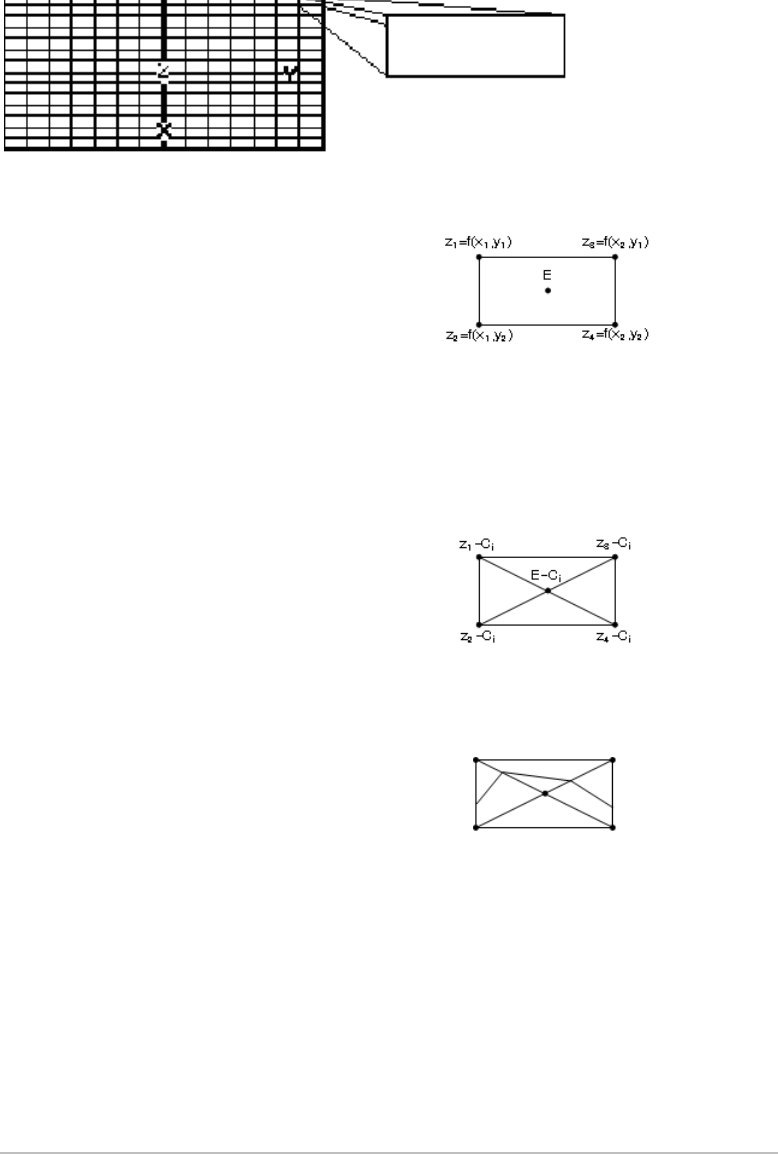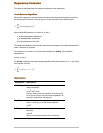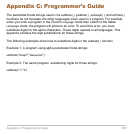
Appendix B: Technical Reference 946
Contour Levels and Implicit Plot Algorithm
Contour Levels and Implicit Plot AlgorithmContour Levels and Implicit Plot Algorithm
Contour Levels and Implicit Plot Algorithm
Contours are calculated and plotted by the following method. An implicit plot is the same
as a contour, except that an implicit plot is for the z=0 contour only.
Algorithm
AlgorithmAlgorithm
Algorithm
Based on your x and y Window variables, the distance between xmin and xmax and
between ymin and ymax is divided into a number of grid lines specified by xgrid and
ygrid. These grid lines intersect to form a series of rectangles.
The
E value is treated as the value of the equation at the center of the rectangle.
For each specified contour value (Ci)
Each rectangle in the grid is treated similarly.
Runge-Kutta Method
Runge-Kutta MethodRunge-Kutta Method
Runge-Kutta Method
For Runge-Kutta integrations of ordinary differential equations, the TI-89 Titanium /
Voyage™ 200 uses the Bogacki-Shampine 3(2) formula as found in the journal Applied
Math Letters, 2 (1989), pp. 1–9.
For each rectangle, the equation is evaluated at
each of the four corners (also called vertices or
grid points) and an average value (E) is
calculated:
E =
• At each of the five points shown to the right,
the difference between the point’s z value
and the contour value is calculated.
• A sign change between any two adjacent points implies that a contour crosses the line that
joins those two points. Linear interpolation is used to approximate where the zero crosses
the line.
• Within the rectangle, any zero crossings
are connected with straight lines.
• This process is repeated for each contour
value.
z1 z2 z3 z4+++
4
-----------------------------------------


















